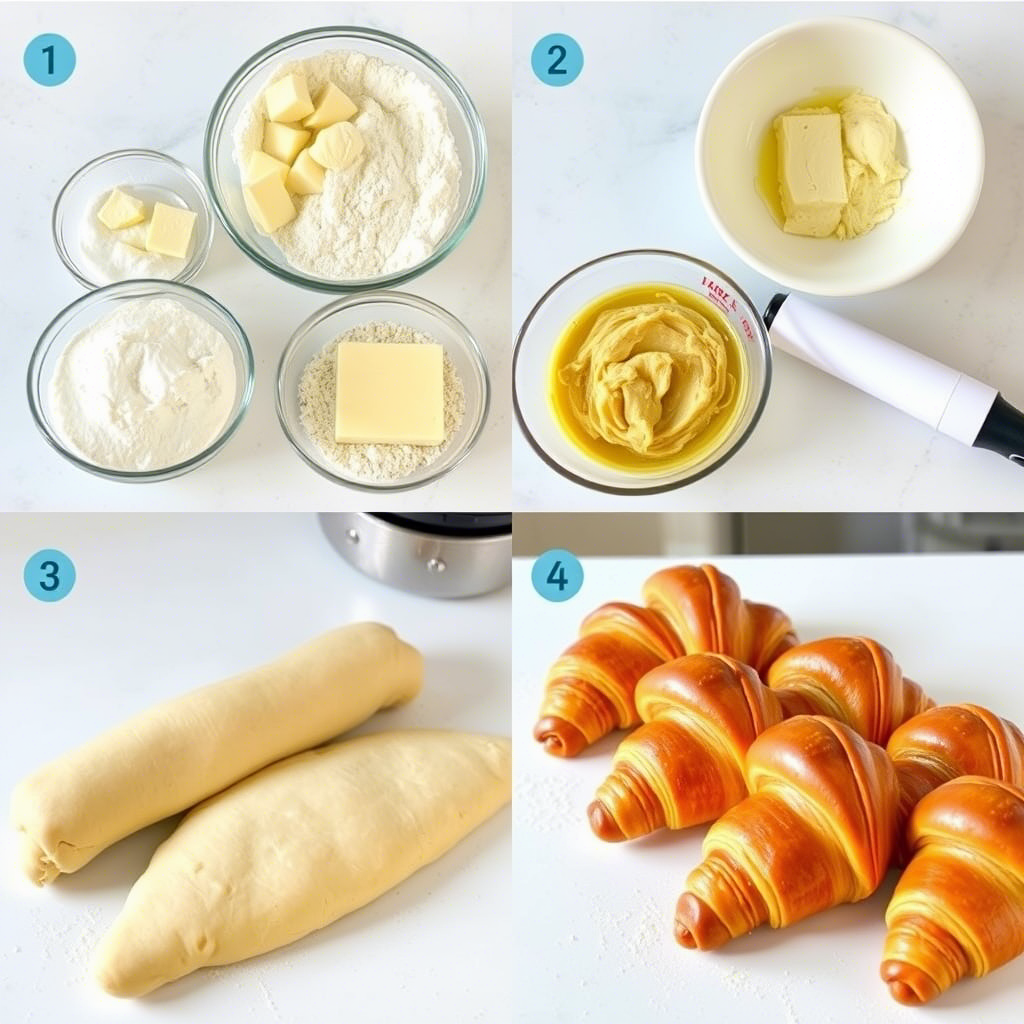There’s nothing quite like biting into a perfectly flaky, buttery croissant. Whether it’s enjoyed with your morning coffee or as an indulgent treat during the weekend, this French pastry has captured hearts worldwide.
But have you ever wondered if you could make one at home? The thought might seem intimidating—after all, professional bakers spend years perfecting their craft—but trust us, making croissants is more accessible than you think! In this article, we’ll walk you through everything you need to know about crafting the best croissant recipe for beginners.
From understanding the basics of dough preparation to mastering the art of lamination, by the end of this guide, you’ll be well on your way to creating golden, melt-in-your-mouth pastries that will impress even the most discerning foodie.
1. Understanding the Basics: What Makes a Great Croissant?
At its core, a great croissant starts with three essential ingredients: flour, butter, and patience. While the list may seem simple, each element plays a crucial role in achieving perfection.
High-quality flour provides structure, while cold, unsalted butter ensures those signature layers are crisp and buttery. Patience, however, is key because the process involves multiple resting periods and careful handling.
To break it down further, here’s what makes a good croissant stand out:
- Flavor : A balance between rich butter and subtle sweetness from the yeast fermentation.
- Texture : Light, airy interiors encased in a delicate, crispy exterior.
- Appearance : Golden brown color with visible layering.
Understanding these fundamentals sets the stage for success. Don’t worry—we’ll cover how to achieve them step by step!
2. Preparing Your Dough: Tips for Success
The foundation of any great croissant lies in its dough. To begin, mix together flour, sugar, salt, milk, water, and active dry yeast. Knead until smooth and elastic, then let it rest briefly before introducing the butter block. This initial phase is where many novice bakers stumble, so here are some tips to keep in mind:
Use Cold Ingredients : Keeping everything chilled prevents the butter from melting prematurely, which helps maintain distinct layers.
Don’t Overwork the Dough : Gentle handling keeps gluten development under control, resulting in tender pastries.
Let It Rest : Allowing the dough to chill in the refrigerator gives the yeast time to work its magic without overfermenting.
Once your dough is ready, it’s time to move onto the next critical step: laminating.
3. Mastering Lamination: The Heart of Croissant Magic
Lamination is the technique responsible for those glorious layers in a croissant. Essentially, it involves folding butter into the dough repeatedly to create thin sheets separated by air pockets. Here’s how to do it right:
- Roll out your chilled dough into a rectangle.
- Place a softened butter block in the center, then fold the dough around it like an envelope.
- Roll the package into a long rectangle again, fold it into thirds (like a letter), and repeat this process two to three times.
Each turn introduces new layers, but remember to refrigerate the dough between turns to prevent the butter from softening too much. By the final stage, your dough should resemble a marbled pattern when sliced—a sign that you’ve done it correctly!
4. Shaping and Baking: Bringing It All Together
With your laminated dough prepared, it’s time to shape and bake your croissants. Cut the dough into triangles, roll them up starting from the base, and curve the ends slightly to form the classic crescent shape.
Let them proof (rise) for about 60–90 minutes in a warm, draft-free area. Once puffed up, brush them lightly with egg wash for added shine.
When baking, preheat your oven to around 400°F (200°C). For best results, use a baking stone or parchment paper to ensure even heat distribution.
After 15–20 minutes, your kitchen will fill with the irresistible aroma of freshly baked croissants. Remove them once they’re beautifully golden and allow them to cool slightly before serving.
5. Embracing Mistakes and Celebrating Success
As with any skill, baking croissants takes practice. Your first batch might not turn out exactly as planned—and that’s okay!
Even experienced bakers encounter challenges along the way. Instead of focusing on imperfections, celebrate small victories. Did your croissants rise properly? Were the layers visible? These milestones indicate progress and motivate you to refine your technique.
For inspiration, consider sharing your creations with friends or family. Watching someone enjoy something you made can reignite your passion for baking. And who knows? You might inspire others to take up the challenge themselves.
Conclusion
Making the best croissant recipe doesn’t require professional training or expensive equipment—it just needs dedication and a willingness to learn.
From mastering dough preparation to perfecting lamination techniques, every step brings you closer to crafting homemade pastries worthy of a Parisian café.
So why wait? Gather your ingredients, roll up your sleeves, and embark on this delicious journey. When you succeed (and you will!), don’t forget to share your experience in the comments below. Happy baking!

Thayná Alves is an influential digital content creator who has carved out a significant space in the realms of technology, finance, and entrepreneurship. Through her blog, Newbacker.com , she stands out as an authentic and accessible voice for individuals seeking practical information about investments, innovation, and emerging trends in the financial market.

